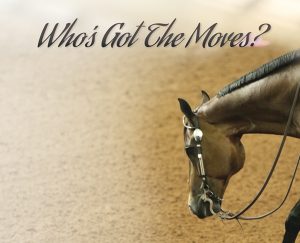Who’s Got The Moves?
Click here to read the complete article
The changes that have occurred in the Trail class over the years are undeniable. From the kind of horse typically entered in the class to the course design itself, it’s a discipline that has seen major shifts and an undeniable growth in popularity in recent decades. With that growth, more and more people are keeping a close eye on the top competitors and the nuanced way in which they approach the course and its obstacles. Observers see top trainers and competitors use their bodies in various ways as they ride the course, which has had a trickle-down effect from open classes to non-pro. Trail experts, though, say the use of the rider’s body to help a horse through a course, without a clear understanding of why those moves are helpful or necessary, can actually be problematic and perhaps even end up as a deduction on a judge’s card.
But First, History
Tim Kimura has been designing Trail courses since 1975, when he started building courses for his dad’s local saddle club horse shows. During his college years, he branched out to designing courses for Quarter Horse shows in California. By the 1980s and ‘90s, he was designing courses throughout the western United States. By the mid-1990s, he designed AQHA World Show courses, and he has continued in that role ever since.
Of course, Kimura didn’t get there alone but built on the work of his predecessors. In the ‘80s, course designers began putting combinations of obstacles together and adding more jog and lope-overs. Kimura took that a step further by adding jumps or obstacles that could be scary or tight. From then on, Kimura’s courses have continued to evolve, with great runs showcasing a horse’s agility and athleticism through more turns and combinations. To keep it fresh and to continue challenging horse and rider teams, he’s recently brought back some of the slower obstacles involving side passing or obstacles that resemble the gate.
Kimura equates the Trail class to a dance. “The best horses and riders are the ones that make it look effortless. Watch great dancers, and you’ll notice they’re so connected; they never seem to wobble. A great showman has to pull off this same calm, cool, effortless expression. They have to give the impression of being a great leader, the horse a great follower, and both entities forming one unit, working together to go through the pattern and look like they own it,” Kimura says.
A Change in Riding Style











